
A descriptive essay about Rome
- Subject:
- English Language Arts
- Literature
- Reading Informational Text
- Material Type:
- Homework/Assignment
- Author:
- Dilay Talu
- Date Added:
- 03/09/2022

A descriptive essay about Rome

Diaspora means the dispersion of the Jews beyond Israel. The dispersion or spread of any people from their original homeland.
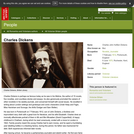
These resources will allow you to investigate the key themes of Dickens's novels alongside original source material from the British Library. Literary manuscripts, newspapers, letters, workhouse menus and many more fascinating collection items will help students open up the social, cultural and political context in which Dickens was writing. This website includes performances by Simon Callow and discussions by Professor of English, John Mullan, filmed at the Charles Dickens Museum, London.

Mary French, director of the Dictionary Project, discussed her organization’s work to promote literacy by giving dictionaries to students. She explains how Annie Plumber began the project and its impact over time.
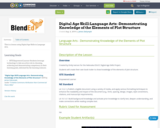
This is a lesson using Digital Age Skills in Language Arts.
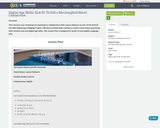
This resource was created by Jen Kastanek in collaboration with Lauren Rabourn as part of the 2019-20 ESU-NDE Digital Age Pedagogy Project. Educators worked with coaches to create Lesson Plans promoting both content area and digital age skills. This Lesson Plan is designed for Grade 10 and English Language Arts.
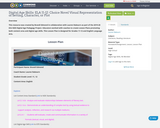
This resource was created by Brandi Edmond in collaboration with Lauren Rabourn as part of the 2019-20 ESU-NDE Digital Age Pedagogy Project. Educators worked with coaches to create Lesson Plans promoting both content area and digital age skills. This Lesson Plan is designed for Grades 11-12 and English Language Arts.
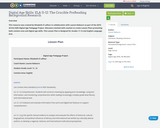
This resource was created by Elizabeth D Lafleur in collaboration with Lauren Rabourn as part of the 2019-20 ESU-NDE Digital Age Pedagogy Project. Educators worked with coaches to create Lesson Plans promoting both content area and digital age skills. This Lesson Plan is designed for Grades 11-12 and English Language Arts.

For this lesson students are required to read"To Kill a Mockingbird" by Harper Lee. Students will then demonstrate an understanding by creating a digital story. Students will give an overview of their favorite part of the book, and present it to the class. Students will create a digital story for their presentation.

Nuestro Objeto de Aprendizaje (OA) sobre diptongos e hiatos está diseñado para estudiantes de cuarto grado, de entre 9 y 10 años. Proporciona información detallada sobre cómo identificar y diferenciar estos conceptos lingüísticos en palabras del español, abordando las reglas ortográficas que los rigen. Incluye ejemplos claros y prácticos, ejercicios interactivos y actividades para reforzar el aprendizaje de manera efectiva. Este recurso se integra en el currículo de Lengua y sirve como herramienta de refuerzo escolar. Está disponible bajo una Licencia Creative Commons y requiere un sistema operativo Windows o Linux, un navegador actualizado y conexión a internet.

Nuestro Objeto de Aprendizaje (OA) sobre diptongos e hiatos está diseñado para estudiantes de cuarto grado, de entre 9 y 10 años. Proporciona información detallada sobre cómo identificar y diferenciar estos conceptos lingüísticos en palabras del español, abordando las reglas ortográficas que los rigen. Incluye ejemplos claros y prácticos, ejercicios interactivos y actividades para reforzar el aprendizaje de manera efectiva. Este recurso se integra en el currículo de Lengua y sirve como herramienta de refuerzo escolar. Está disponible bajo una Licencia Creative Commons y requiere un sistema operativo Windows o Linux, un navegador actualizado y conexión a internet.
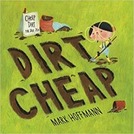
Within this collection you will find lessons and handouts you can use in your classroom. You will also find a brief summary of each resource with the source sited for further exploration, appropriate grade level, approximate lesson length, and learning standards.

Dr Sally Bayley presents an illuminating reading of Emily Dickinson's 'I started early, took my dog'. In her reading, she seeks out allusions to Shakespearean plays including Hamlet and The Merchant of Venice. She then answers questions about the poem. This audio recording is part the Interviews on Great Writers series presented by Oxford University Podcasts.

Dogzilla is a fantasy story of mice who protect their city, Mousopolis, from being destroyed by Dogzilla. The mice come up with a plan to give Dogzilla a bath, which scares him away.
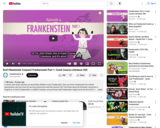
In which John Green teaches you about Mary Shelley's novel, Frankenstein. Sure, you know Frankenstein the cultural phenomenon, but how much do you know about the novel that started it all? You'll learn about the Romantic movement in English lit, of which Frankenstein is a GREAT example, and you'll learn that Frankenstein might just be the first SciFi novel. Once again, literature comes down to just what it means to be human. John will review the plot, take you through a couple of different critical readings of the novel, and will discuss the final disposition of Percy Shelley's heart.
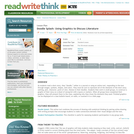
Students keep a doodle journal while reading short stories by a common author. In small groups, students then combine their doodles into a graphic representation of the text.
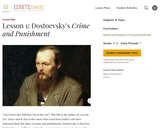
Students examine the divided nature of Raskolnikov's character and personality. Then they uncover the divided natures of other characters"”a fact that becomes increasingly evident as the novel progresses to go beyond character analysis to comprehend Dostoyevsky's underlying themes. What does the novel imply about human nature? Dostoevsky clearly perceived that people are neither simple nor easily classified; they are often torn in opposite directions by forces both inside of and outside of themselves, sometimes with catastrophic results.

This resource provides lecture notes and writing assignments for the study of drama. While Othello and Trifles are mentioned specifically, these notes and assignments can be adapted and applied to practically any play. Unless otherwise noted, the materials in this unit are licensed under CC BY-NC-SA.
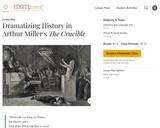
By closely reading historical documents and attempting to interpret them, students consider how Arthur Miller interpreted the facts of the Salem witch trials and how he successfully dramatized them in his play, "The Crucible." As they explore historical materials, such as the biographies of key players (the accused and the accusers) and transcripts of the Salem Witch trials themselves, students will be guided by aesthetic and dramatic concerns: In what ways do historical events lend themselves (or not) to dramatization? What makes a particular dramatization of history effective and memorable?
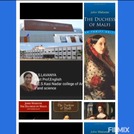
Summary of Duchess of Malfi